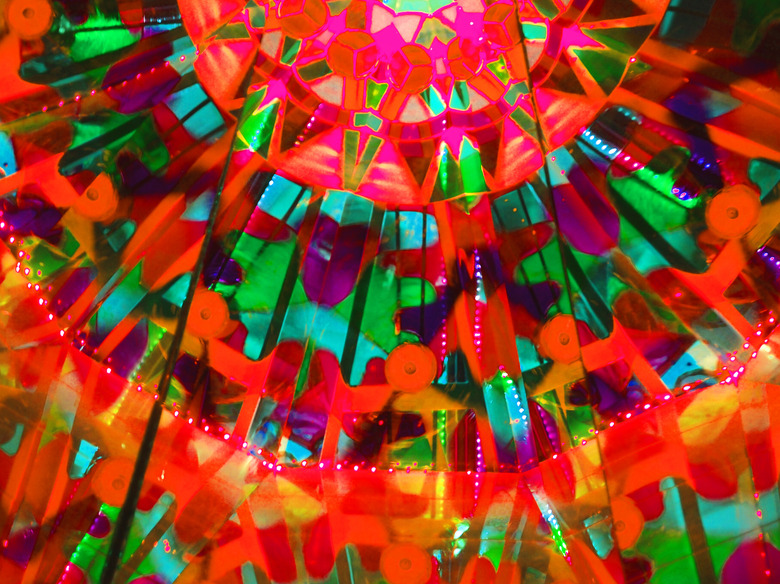How Does A Kaleidoscope Work?
A fascinating toy
A kaleidoscope is a toy that uses light and mirrors to reflect objects and create beautiful, fascinating repeating patterns. There are many different types of kaleidoscopes that create different patterns, but all use the same basic laws of physics, manipulating light and reflection.
The main tube: reflection
The main tube: reflection
The first part that is essential to the kaleidoscope is a reflective material. Most kaleidoscopes use mirrors. Long, thin mirrors are set so that they are facing one another. Different numbers of mirrors can be used, depending on the end pattern desired, but commonly, three mirrors are used to generate a pattern based on repeating triangles. They are usually set in cardboard, but kaleidoscopes can be made out of any round, hollow material. Homemade kaleidoscopes can be made using a paper towel roll with aluminum foil for a reflective surface. Older kaleidoscopes were crafted with tin. Some versions use three pieces of blown glass that are set in a triangle.
The far end: object chamber
The far end: object chamber
One end of the kaleidoscope, called the object chamber, contains the objects to be reflected. A homemade kaleidoscope can be made using beads, string and paper clips. The standard kaleidoscope is made with bits of colored plastic or glass. The end of the kaleidoscope is closed off with glass or plastic. This not only keeps the objects contained, but filters light through to reflect the images. On some versions, the end of the kaleidoscope rotates so that different patterns can be easily created. Homemade versions can be rotated by hand for the same effect. There are also types that hold glass marbles for the objects; marbles can be interchanged for different patterns. A toy similar to a kaleidoscope, a teleidoscope, simply contains glass, so that whatever in the outside world the teleidoscope is pointed at becomes the basis of the patterns. The glass may be colored or patterned to create wondrous images from ordinary objects in the surrounding environment.
The near end: a small hole for viewing
The near end: a small hole for viewing
The other end of the kaleidoscope is for viewing. It can be closed off as well, as long as there is a small hole for viewing. The hole is held up to the eye so that the eye looks down through the mirrors and can see the patterns created by the reflections.
Glass, movement, and light
Glass, movement, and light
When looking through the hole, light filters through the glass (or clear plastic) on the end of the object chamber and illuminates the objects, which then reflect off of all of the mirrors. The reflections bounce off of one another as the light passes through the tube. The eye sees these bouncing reflections, creating the patters. As the kaleidoscope rotates, the objects shift in the chamber, and the reflection changes, creating new patterns. The concept is simple, but creates a wonderful end result that delights and entertains.
Cite This Article
MLA
Writer, Contributing. "How Does A Kaleidoscope Work?" sciencing.com, https://www.sciencing.com/a-kaleidoscope-work-4564059/. 13 March 2018.
APA
Writer, Contributing. (2018, March 13). How Does A Kaleidoscope Work?. sciencing.com. Retrieved from https://www.sciencing.com/a-kaleidoscope-work-4564059/
Chicago
Writer, Contributing. How Does A Kaleidoscope Work? last modified March 24, 2022. https://www.sciencing.com/a-kaleidoscope-work-4564059/
